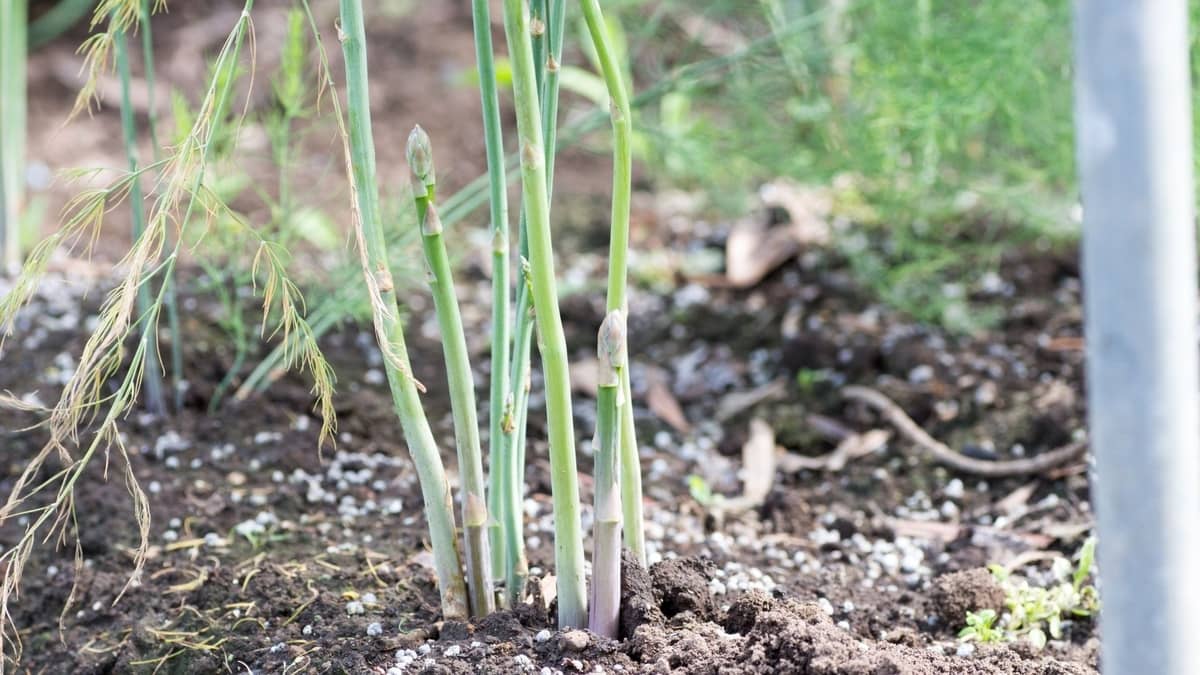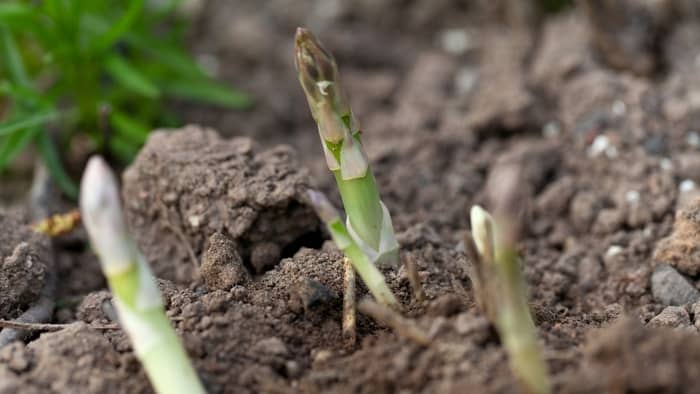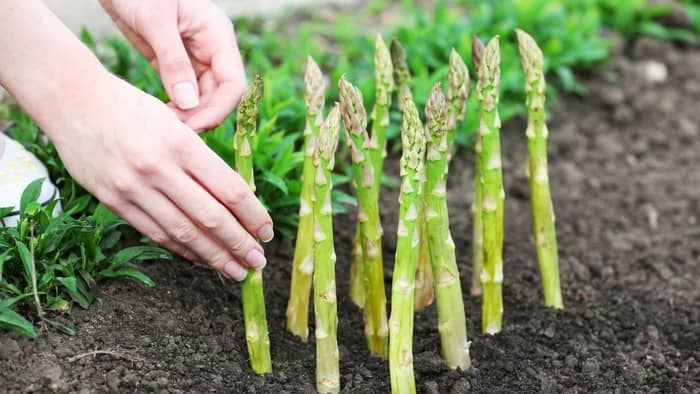Last Updated on December 30, 2021 by Guillermina
Can I grow asparagus indoors? Click to learn the best tricks and tips for growing this delicious plant indoors.
Asparagus is rich in B vitamins, vitamin C, calcium, and iron. This makes them a healthy and tasty addition to any meal. They are one of the few perennial vegetables that will grow fresh spears year after year. Best of all, they require very little effort.
Since not everyone has a garden, it is logical that we often hear the question “can I grow asparagus indoors”. Keep reading to find out all the details about this delicious plant.
About The Plant
Asparagus is a genus from the Asparagaceae family that numbers up to 300 species. They originate from Siberia to South Africa. Most of them are grown as vegetables because of their succulent spring stalks. However, some species are grown as ornamental plants.
Asparagus can be erect or climbing, and most of them are woody, and usually have tuberous or rhizome-like roots. Their leaves are reduced to small scales. In addition, they are characterized by the presence of cladodes, leaf-like organs in the axils of their leaves. Asparagus are dioecious, meaning that individuals are either male or female.
How To Grow Asparagus Indoors – The Best Tips And Tricks
How To Grow Asparagus Indoors From Seed
Planting asparagus seeds is an exercise in patience, but there are advantages to gain from the extra wait. The seeds are known to germinate slowly, and the crowns take three seasons before they can handle being harvested.
In addition, seed-grown plants don’t suffer from transplant trauma like roots grown in nurseries. You can also buy a whole package of seeds for the same price as one asparagus crown. After all, most of those planted from seed eventually outperform those started from the root.
Seedlings are always best to start indoors in late February or early March. Simply sow individual seeds in newspaper pots and place them on a sunny window. Let the temperature vary from 60 to 70ºF.
When you start noticing flowers, use a magnifying glass to distinguish them. Female flowers have well-developed, three-limbed stalks. On the other hand, male flowers are larger and longer than female ones. It would be good to separate the male and female and transplant them into independent pots.
Growing In Pots And Containers
After the seeds have germinated, plant them in a pot. It would be best to plant the asparagus seeds 1 1/2 inches deep in individual pots. They will spend about a year there before transplanting them into their permanent containers.
When it comes time to transplant, choose a larger container, about 7 to 8 inches deep and at least 3 to 6 feet wide. Finally, plant one crown per container.
Most important of all is to place your containers in a window that receives full sun. They are able to develop spears at room temperature. However, asparagus (although grown indoors) still requires cooler temperatures for dormancy during the winter months. Therefore, during this time it would be necessary to find space and move your containers outside.
How To Make Adequate Space For Established Plants
Asparagus is a perennial vegetable that takes at least two years to become established and reach maturity. It needs a lot of space because fern-like leaves usually reach a height between 3 and 5 feet and a width of even between 1 1/2 and 3 feet.
In addition, those grown in containers do not live as long as those planted in the ground or raised bed. Container-grown asparagus yields only three to four years. In contrast, those grown out of containers last much longer and yield crops for many more seasons. These are just some of the reasons why asparagus is not recommended to be grown indoors. However, it is still possible.
Other Conditions For Growing Asparagus Indoors
Asparagus is a plant full of sun, which means that temperatures between 65 and 85 degrees Fahrenheit suit it best. If the soil temperature drops below 50 F, it can inhibit spear production. On the other hand, if it rises above 85 F, it can damage the quality and taste.
Try to provide your plants with well-drained soil. Finally, avoid heavy clay soils as they can cause drainage problems.
During the first two years, your plant needs regular watering. As they mature, they develop long and fleshy roots deep into the ground. As the roots grow the need for watering decreases or become less critical. As a rule, they need about 1 ″ of water per week.
Harvesting
You may notice that the spears develop within a few weeks to a few months after planting your asparagus crowns. However, try to resist the urge to harvest! During this period, your asparagus is not ready for harvest as it still gathers energy to establish deep roots. This ultimately leads to an increased risk of crop damage or plant weakening.
When the time finally comes, in the third season, pick the spears over a four-week period. In the fourth, you are free to extend the harvest to eight weeks.
You can start harvesting in early spring. The process itself consists of cutting the asparagus spear with a sharp knife. In addition to the knife, you can easily snap the spear with your fingers at ground level or just below. Store them in the refrigerator, but wrap them in a damp paper towel beforehand.
Pest Problems & Defects
The most common parasite will be Asparagus beetles. These 1/4 inch long, metallic blue-black pests lay dark eggs along with the leaves, chew spears, and attack the leaves. If you notice that an invasion has taken place on your plant, you have several solutions. You can do handpicking, or spray or dust the plant with insecticidal soap.
Apart from it, you can expect occasional visits from the 12-spotted asparagus beetle and the Asparagus miner. They also feed on leaves, and the Asparagus miner also makes zigzag tunnels on the stems. This plant is prone to Aphids, which can often be found on growing tops. You will recognize them by the soot stains they leave behind.
Ultimately
The answer to the question “can I grow asparagus indoors” is yes! However, it is important to note that this will not always be easy and simple. Asparagus is quite difficult to grow indoors (due to its size and volume) but it is very possible.
Provide them with plenty of light, water, and quality soil. In addition, remember that you must not harvest for at least the first two years. This is the only way to prevent crop damage or plant weakening.
What are your impressions and experiences with growing asparagus indoors? Let us know in the comments below.
Read more about The Ultimate Guide: Growing Hoyas Indoors




